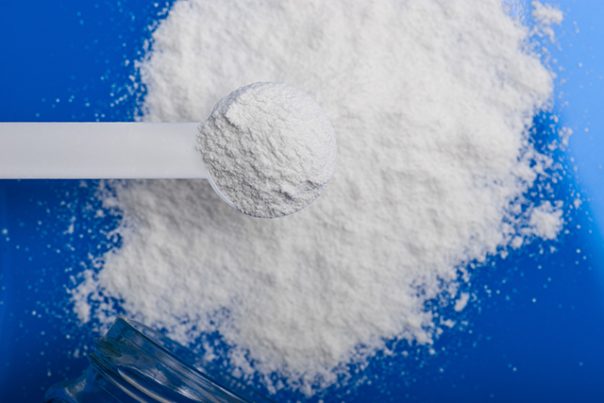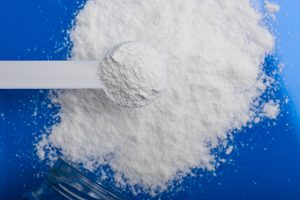
Aldicarb – toxicity, side effects, diseases and environmental impacts
Thursday, November 30, 2017 by Rita Winters
http://www.naturalpedia.com/aldicarb-toxicity-side-effects-diseases-and-environmental-impacts.html

Aldicarb is a carbamate acaricide which kills spiders, mites and ticks, and nematodes (roundworms). It is a very toxic chemical compound that is well known as an active ingredient of Temik, a Union Carbide product. This off-white crystalline substance was first manufactured in 1965, and was registered for use a few years later. It inhibits the function of acetylcholinesterase, an enzyme which is critical to the nervous system. Aldicarb is one of the most toxic substances registered with the Environmental Protection Agency (EPA). In some countries, aldicarb is used as an illegal rodenticide in residential locations.
Other names for aldicarb include: (US EPA PC Code ); 098301 (US EPA PC Code Text ); 116-06-3 (CAS number); 116063; 167 (PDP Code); 2-Methyl-2-(methylthio)propanol O-[(methylamino)carbonyl]oxime; 2-Methyl-2-(methylthio)propionaldehyde O-(methylcarbamoyl)oxime; 575 (CA DPR Chem Code); Temik; Aldicarb-1; Aldicarb-2; Aldicarbe; Aldikarb; Carbamic acid; methyl-, O-((2-methyl-2-(methylthio)propylidene)amino) deriv.; ENT 27093; NCI-C08640; OMS 771; Propanal, 2-methyl-2-(methylthio)-, O-((methylamino)carbonyl)oxime; Propionaldehyde, 2-methyl-2-(methylthio)-, O-(methylcarbamoyl)oxime; and UC-21149.
Aldicarb became infamous for tainting watermelons in California, poisoning more than 2,000 individuals in the 1980s. It is currently produced by Bayer CropScience, who announced phasing out aldicarb from production. However, the reports show that distribution of the chemical continued in 2016. Aldicarb also has a negative environmental impact: Residues may accumulate and contaminate water sources. It does not degrade easily, and may be fatal to organisms exposed to it.
While several studies and experiments have been executed, there are no studies or reports on the carcinogenic effects of aldicarb to date.

List of known side effects
Consumption of aldicarb-contaminated food and water is the primary route for human exposure. Occupational exposure is also one of the main causes of aldicarb poisoning. Aldicarb is extremely toxic through oral and dermal routes of exposure, 1,000 times more than other carbamates. Onset of symptoms in humans is between 15 minutes to three hours. As a cholinesterase inhibitor, poisoning results in side effects like lethargy, blurred vision, headaches, nausea, tearing, sweating and tremors. High doses or long-term exposure can result in paralysis of the respiratory system, coma, seizures, hypotonicity, hypertension, cardiorespiratory depression and subsequently, death.
Other symptoms may include malaise, dizziness, incoordination, slurred speech, drooling, vomiting, diarrhea, partial blindness, cramps, muscle spasms, pulmonary edema, miosis (excessive pupil contraction), and breathing troubles.
Body systems affected by aldicarb
Aldicarb poisoning can happen through the oral, dermal, inhalation and ingestion routes. It targets the central nervous system and the reproductive system. Aldicarb is metabolized quickly and is excreted through the urine within 24 hours. Birds and aquatic organisms are greatly affected by aldicarb exposure and is fatal to them.
Items that may contain aldicarb
This chemical acaricide is used on cotton, dried beans, peanuts, soy, potatoes and citrus. Aldicarb residue may also be found in commercial agricultural sites, and illegally in residential locations in other countries.
How to avoid aldicarb
When aldicarb is inhaled, move victim to fresh air and have them take a resting position. Skin absorption is likely, therefore contaminated clothing and protective gear must be removed or disposed of. Affected areas of the skin or eyes must be flushed with water. If ingested, activated charcoal may be given, and vomiting should be induced. For all scenarios, emergency medical services must be contacted immediately.
Where to learn more
- FDA takes stand for public health, resists industry pressures to increase allowable levels of toxic fungicide carbendazim in orange juice product imports
- The pesticide atrocity of Nicaragua: Nemagon survivors seek justice after being poisoned
- Chemicals.news
- Pesticides.news
- Toxins.news
Summary
Aldicarb is highly toxic to humans, birds, and aquatic organisms.
Aldicarb must not be absorbed by the skin, eyes, inhaled or ingested.
Aldicarb poisoning can result in death.
Sources include:
Tagged Under: Tags: aldicarb





